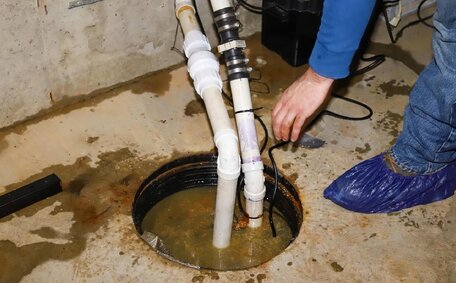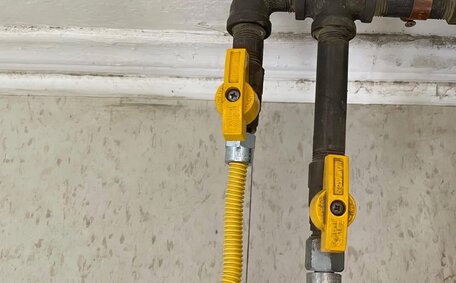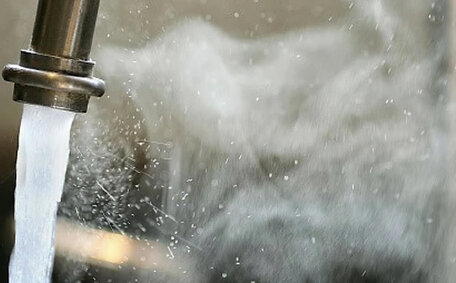No Hot Water In Your House? 8 Quick Checks To Do Yourself
Encountering only cold water when you expect hot is inconvenient. Conduct these immediate self-checks to potentially solve the problem before calling a plumber.
- Verify your gas water heater’s pilot light. If it’s extinguished, re-ignite it according to the manufacturer’s guidelines.
- For electric systems, inspect your circuit breaker or fuse box to ensure power is reaching your water heater.
- Confirm all taps are closed; even slightly open taps can interfere with hot water delivery.
- Inspect the temperature and pressure relief valve for leaks. A compromised valve can drain the tank’s hot water.
- Ensure no outdoor taps or valves are open as they can impact your unit’s water pressure.
- Bleed air from radiator valves in hydronic systems to resolve airlocks that hinder water flow from the tank.
- Examine hot and cold water pipe connections beneath sinks for any looseness that could be causing temperature mixing.
- Evaluate the water flow at different faucets. A discrepancy between cold and hot flow may suggest an issue with hot water pipes.
Performing these checks might fix the issue, potentially negating the need for a plumber. However, if problems continue, contact us for specialised assistance.
Checking The Power And Gas Supply To Your Hot Water System
It’s crucial that your hot water system receives sufficient gas and power supply. For gas units, verify the pilot light is alight with a stable blue flame.
With electric systems, head to your fuse box or circuit breaker and check that the switch or fuse supplying power to the hot water unit is still on. If it has tripped, switch it on again to see if this action restores your hot water.
Examine the gas line and electrical cord connected to your hot water system for any signs of damage. Confirm their integrity and absence of damage. When defects occur within the supply lines, inhibiting energy from reaching your system, it is time to consider professional intervention.
If your checks of the pilot light, circuit breaker, and connections still result in no hot water, a deeper issue may be at play. We suggest calling our expert plumbers for a detailed diagnosis and repairs.
Inspecting Your Electric Hot Water System For Issues
When troubleshooting an electric hot water system, there are a few key components to inspect in case of malfunction:
Check The Circuit Breaker
Ensure the circuit breaker connected to your electric water heater is in the 'on’ position. A tripped breaker cuts power flow and prevents the water from heating. Turning the circuit breaker back to 'on’ may often reinstate regular function.
Test The Thermostats
Electric water heaters have thermostats that control the temperature setting. Faulty thermostats can fail to heat the water properly. Activate the temperature test button on the thermostat to check its functionality while the system is operating.
Assess The Heating Elements
Heating elements warm the water by conducting electricity. Visually inspect elements for any cracks or burn marks which can prevent them from providing all the heating efficiency your water heater needs. Utilize a multimeter to test the elements’ current draw; if absent, this usually means they’ve failed.
If the circuit breaker, thermostats, and heating elements are in working order but there’s still no hot water, it’s advisable to seek professional plumbing assistance. On average, Australian homes with electric hot water systems spend over 20% of their energy on water heating.
Checking For Common Gas Hot Water System Problems
Gas hot water systems can encounter common problems that prevent them from heating water effectively:
Pilot Light Goes Out
If the pilot light extinguishes, the burner cannot ignite to heat the water. Check if any drafts or ventilation near the unit could be blowing out the pilot flame. Also inspect the thermocouple - if faulty, it fails to sense the pilot is lit and shuts off gas flow.
Thermocouple Failure
Thermocouples operate using heat from the pilot light. If they malfunction, the gas supply to the burner gets shut off as a safety precaution. Visually check for damage or corrosion on the thermocouple probe.
Burner or Flame Failure
The main burner may fail to ignite or produce low flame even if the pilot light is on. This can result from blocked gas injectors, faulty gas controls or insufficient gas pressure. Do a visual check of the burner when operating to spot any issues.
If basic inspection of the pilot light, thermocouple or burner doesn’t reveal an obvious fault, then get in touch with our gas fitting specialists to properly diagnose and repair your system.
Low Water Flow and Pressure Can Prevent Hot Water
Reduced flow or inconsistent pressure can disrupt your hot water system’s performance even when it’s mechanically sound. There are a few checks to determine if insufficient water pressure is preventing hot water supply in your home:
Inspect Water Pressure at Taps
Evaluate the water flow rates at fixtures in your home to identify any inconsistencies, ensuring your hot water system operates smoothly. Turn on the hot tap fully and see if the stream seems weaker than the cold water. Poor flow, sputtering or longer than normal times to get hot water point to a pressure problem.
Check for Closed Valves or Blocked Pipes
Confirm all main inlet valve mechanisms, especially under sinks and leading to outside taps, are in their fully unobstructed positions. A partially closed valve can lower pressure. Also, attend to blocked drains, aerators, and shower heads, as these can significantly restrict water flow.
Assess Household Water Pressure
Use a water pressure gauge to directly measure the incoming household water pressure. Pressure below 30 PSI can lead to insufficient hot water flow to taps. Consistently low pressure usually requires adjusting regulator valves or inspecting main lines for issues.
Prioritise restoring strong water pressure before enjoying a hot shower, especially since the average household uses over 25 litres of hot water per person daily.
Sediment Buildup Reduces Hot Water Supply
Sediment and mineral deposits can build up in hot water tanks over time. This buildup of limescale and corrosion particles insulates the water from properly contacting heating elements or burner tubes. As a result, less heat gets transferred to the water, reducing hot water supply from taps and showers.
Signs of Sediment Buildup
There are a few warning signs that sediment accumulation may be impairing your hot water system:
- Decreased hot water pressure and flow rates
- Noisy rumbling or banging sounds from the hot water tank
- Higher energy bills as the system works harder to heat water
- The bottom of the tank feeling warm but delivering cool water
Removing Sediment From Tanks
An annual flush of your water heater can remove sediment or limescale, maintaining its efficiency. We recommend turning off power/gas to the unit, attaching a hose to the tank drain valve, and rinsing thoroughly. Flushing a clogged tank can help restore hot water capacity.
If performance remains subpar after flushing, it may indicate a need for a new hot water element or piping, requiring professional plumbing installation. Don’t hesitate to contact us if sediment removal efforts fail to improve hot water supply.
Identifying Problems With Tankless Hot Water Systems
Tankless hot water systems, unlike traditional tanks, have distinct operational issues:
Scale Buildup
The heating elements in tankless heaters are more prone to limescale accumulation from hard water. This reduces heating efficiency and can completely block water flow. Check elements yearly and descale as needed.
Overheating
Should the unit overheat, you might encounter error codes or a total shutdown; this often happens when there’s inadequate water flow or pressure in your homes, prompting the high-limit switch to activate. Inspect your home’s water pressure and flow rate at taps.
Insufficient Gas Supply
Tankless heaters require high gas flow rates to activate their burners. Ensure your gas line is adequately sized. Check the gas pressure while the unit is operating to verify adequate volume.
If your tankless hot water system displays error codes or you encounter decreased hot water supply, contact our service team for troubleshooting assistance.
Knowing When To Call A Professional Plumber
Regardless of our desire to handle plumbing troubles independently, occasions arise when it’s unmistakably time to call in the expertise of a seasoned plumber. There are several indicators it’s time to call upon the expertise of Kellyville Plumbing for support:
You’ve Tried All Troubleshooting Steps
If you’ve carefully worked through inspecting your hot water system and attempted basic repairs or maintenance like relighting pilot lights, bleeding radiators or flushing sediment, yet still have no hot water, then a deeper problem likely exists requiring a plumber’s expertise.
Leaks, Faulty Pipes or No Water at All
Issues beyond a complete lack of hot water, like major water leaks, flooding, sewage backups, or no water throughout your home, could indicate an emergency plumbing situation requiring immediate action. Avoid taking risks with these significant matters, and rather give us the opportunity to mend them efficiently.
Gas Work Requires a Licenced Professional
Repairs to gas lines, installations of new gas fittings, and thorough examinations of gas leak situations or supply challenges must be undertaken solely by licenced professionals for your protection. Permit our seasoned professionals to delve into the issues they can fix efficiently.
Should you exceed your DIY troubleshooting capabilities or face pressing plumbing issues, don’t hesitate to lean on the expertise of your local water service team at Kellyville Plumbing on 1300 349 338. Email [email protected] for 24/7 assistance.
Temporary Hot Water Solutions For Your Home
Finding yourself suddenly without hot water can be highly disruptive. While you await comprehensive repairs or the installation of a new hot water heater, consider these interim steps to procure a bit of hot water:
- For gas systems, re-light the pilot light as instructed by the manufacturer to temporarily restore some hot water.
- Use electric kettles or portable camping heaters to manually warm small amounts of water as a temporary solution.
- Insulate your hot water pipes to slow heat loss as water travels to taps. Pipe insulation is available from hardware stores.
- Adjust your water heater’s thermostat to its highest temperature setting to compensate for failing heating elements.
- Limit hot water usage to critical needs like bathing. Avoid dishwashers or washing machines to reduce demand.
While not sustainable long-term solutions, these tips can temporarily restore vital hot water until your system can be properly repaired or replaced by a professional plumber.






